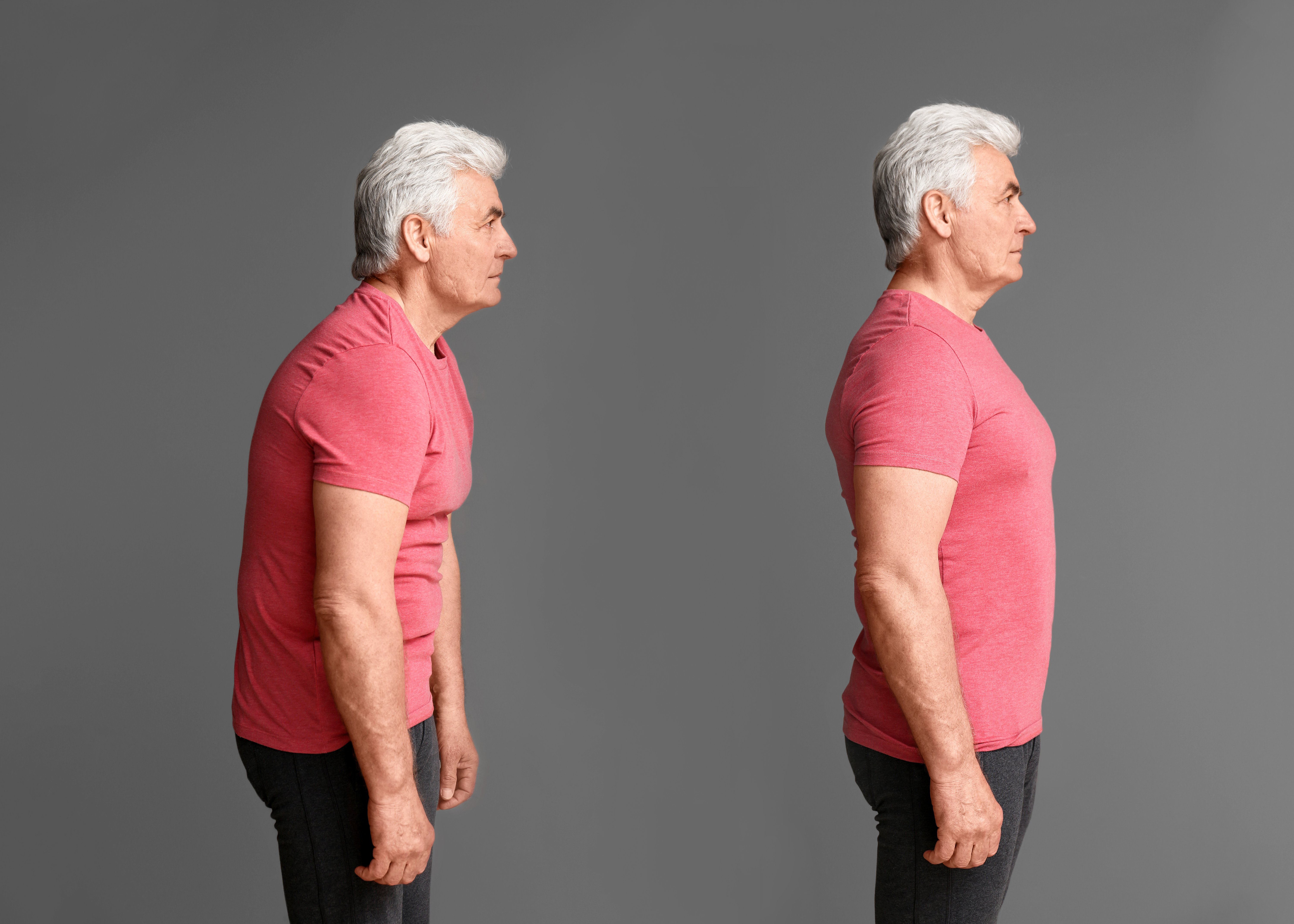What is the connection between Neck Pain and Posture?

What is the connection between Neck Pain and Posture?
Did your mother used to tell you that if you didn’t stop hunching your shoulders, they’d be stuck that way forever? Okay, mom! Yet, fast forward a few decades and it turns out mom might have been on to something after all.
Neck and upper back pain can limit your movements and capabilities. If you don’t do anything about your pains, they can get worse, spread, and limit you further. This is usually because the muscles around your immediate area of pain have tensed up to protect that one spot. That expansion limits movement and can turn one clenched muscle under your shoulder blade into a painful shoulder and a tension headache.
Unfortunately, once you start experiencing neck and back pain, simply squaring your shoulders isn’t likely to be much help. Working with a physical therapist can help you to train the muscles in your back, neck and shoulders so that you can improve your posture permanently, and in doing so bring relief to your chronic neck and back pain.
The Posture and Pain Connection
Not all back pain is caused by poor posture, and it is true that you can have poor posture for years without feeling the consequences of that slouch right away, but in time the habit is likely to catch up with you.
 Poor posture can also impact TMJ pain. The temporomandibular joint connects your jaw to the temporal bones of your skull, which are located in front of each ear. When this joint becomes inflamed, it can cause headaches, loud popping, face, jaw, and neck pain. Forward head posture seems to be the prime instigator because the posture causes an excessive amount of tension on the jaw muscles.
Poor posture can also impact TMJ pain. The temporomandibular joint connects your jaw to the temporal bones of your skull, which are located in front of each ear. When this joint becomes inflamed, it can cause headaches, loud popping, face, jaw, and neck pain. Forward head posture seems to be the prime instigator because the posture causes an excessive amount of tension on the jaw muscles.
How to tell if my neck pain is caused by poor posture?
There are certain ways that you can tell if neck or back pain may be a result of poor posture, including:
-
The pain in your back is worsened at certain times of day. For example, after you’ve spent a day at the office, or after a few hours on the couch.
-
The pain frequently starts in your neck and moves into your upper and lower back. Pain that seems to travel from one area of the back to another is frequently an indication of posture concerns.
-
The pain will subside after switching positions, such as switching from sitting to standing or vice versa.
-
Back or neck pain that develops soon after a change in circumstances, such as starting a new job with a new desk chair, or getting a new car.
After years of practicing poor posture, your back, shoulder and neck muscles will likely find standing or sitting with straight posture to be uncomfortable. This is because your muscles have grown accustomed to the slouching, and standing up straight will require some thorough stretching. That doesn’t mean that once you have bad posture you can never correct it.
The Difference Between Good and Poor Posture
Forward head posture occurs when the neck slants forward, placing the head further in front of the shoulders rather than directly above. This head position can lead to several problems:
-
Increased stress on the cervical spine
As the head is held forward in poor posture, the cervical spine must support increasing amounts of weight. One rule of thumb is that for every inch that the head is held forward in poor posture, an additional 10 pounds of weight is felt on the cervical spine.1 So if the average head weighs between 10 and 12 pounds, just 1 or 2 inches of forward head posture can double or triple the load on the cervical spine. -
Muscle overload
Some muscles in the neck and upper back must continually overwork to counterbalance the pull of gravity on the forward head. As a result, muscles become more susceptible to painful strains and spasms. -
Hunched upper back
Forward head posture is often accompanied by forward shoulders and a rounded upper back, which can lead to more pain in the neck, upper back, and/or shoulders.
The longer that poor posture is continued more likely that neck pain, stiffness, and other symptoms may develop.
How can physiotherapy help?
Working with a physical therapist to improve your posture is a great way to overcome chronic neck and back pain.
In physical therapy, you will be guided through a series of stretches and strength building exercises that can help you begin training your body to practice better posture, thereby reducing your back and neck pain.
Of course, there are ways that you can improve your posture at home, as well. Here are several strategies that are typically helpful:
- Try to stand tall whenever you are standing or walking. Hold your head high and square your shoulders, but more importantly work on being the tallest version of yourself. Hunching over is the leading cause of poor posture.
- Use support when you sit to keep your posture correct. Lumbar support in office chairs and car seats will help a bit, but for improved posture you may need to add additional cushioning that will help you keep your back straight.
- Be mindful of how you lift heavy objects. Keep your shoulders square and your chest forward. When lifting something that is over 50 lbs it is important to take extra care. Lead with your hips and try to keep the weight close to your body. Lifting something improperly can lead to injury to your neck or back, which may make proper posture uncomfortable.
What Can Good Posture Do For You?
 A 2014 study on text neck — also called tech neck, a problem caused by constantly looking down at your phone or tablet — found that when you hold your head in line with your shoulders, it only weighs about 10 pounds.
A 2014 study on text neck — also called tech neck, a problem caused by constantly looking down at your phone or tablet — found that when you hold your head in line with your shoulders, it only weighs about 10 pounds.
But for every inch you tilt it forward, the amount of weight it places on your spine nearly doubles!
There are a lot of benefits of having good posture. Aside from saying goodbye to neck or back pain, improving your posture can provide several unexpected benefits to your lifestyle and personal well-being.
Here are a few of the additional benefits of having good posture:
- Proper posture creates quality exercise for your core and back
- Improved respiratory health
- Added protection for your organs, bones, joints and muscles
- Reduced risk of arthritis.
If you are experiencing chronic neck and back pain, there is a good chance that it could be related to your posture. Contact our physical therapist to learn more about how you can take steps to start improving your posture today.
